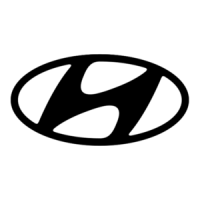Why do the lamps flicker during engine operation on my Hyundai 160D-9?
- AAlejandra LivingstonSep 7, 2025
If the lamps flicker during engine operation of your Hyundai Forklifts, it could be due to improper belt tension, which requires adjustment.

Why do the lamps flicker during engine operation on my Hyundai 160D-9?
If the lamps flicker during engine operation of your Hyundai Forklifts, it could be due to improper belt tension, which requires adjustment.
Why doesn't the charge lamp light during normal engine operation on my Hyundai 160D-9 Forklifts?
If the charge lamp does not light during normal engine operation of your Hyundai Forklifts, the charge lamp may be defective, and you should replace it. Another possible cause is faulty wiring, which requires checking and repair.
Why does the starting motor pinion repeat going in and out on my Hyundai 160D-9 Forklifts?
If the starting motor pinion on your Hyundai Forklifts repeats going in and out, it's likely due to insufficient battery voltage, requiring you to recharge the battery.
Why is the starting motor speed excessively low on my Hyundai 160D-9?
If your Hyundai Forklifts has an excessively low starting motor speed, it could be caused by insufficient battery voltage, requiring you to recharge the battery. Alternatively, the starting motor itself may be defective and need replacement.
What causes a large fork lowering speed in Hyundai 160D-9 Forklifts?
If your Hyundai Forklifts has a large fork lowering speed, it could be due to a defective seal inside the control valve, suggesting you replace the spool or valve body. Oil leaks from a joint or hose would need replacement. Finally, a defective seal inside the cylinder requires replacing the packing.
| Model | 160D-9 |
|---|---|
| Category | Forklifts |
| Power Type | Diesel |
| Rated Capacity | 16000 kg |
| Load Center Distance | 1200 mm |
| Engine Model | Cummins QSB6.7 |
| Number of Cylinders | 6 |
| Transmission | Automatic |
| Tire Type | Pneumatic |
| Fork Length | 2400 mm |
| Max. Lifting Height | 3000 mm |
| Lifting Height | 3000 mm |
Procedure for inspecting the lift truck at the beginning of each shift for safe operation.
Importance and proper use of seat belts for operator safety.
Critical safety rules regarding the use and operation of forks.
Information on causes of tip-overs and how to react.
Precautions for handling loose or unbalanced loads safely.
Importance of checking overhead clearances to prevent truck tip-over or load spill.
Hazards associated with fast turns and high loads, risk of tip-over.
Safety guidelines for operating near electrical lines.
Safety rules for lifting loads, avoiding unsafe practices.
Detailed visual and functional checks for daily lift truck inspection.
Safe practices for refueling diesel trucks.
Prerequisites and safety checks before operating the lift truck.
Walk-around checks required before starting the engine.
Detailed checks of fluids, tire pressure, and engine components.
Ensuring the truck is in a safe state before starting operation.
Procedures for starting and stopping the engine safely.
General safety rules for operating the lift truck.
Safe practices for handling and moving loads with the lift truck.
Steps for safely shutting down and parking the lift truck.
Step-by-step guide to safely towing a disabled lift truck.
Procedure for emergency release of the parking brake.
Safe instructions for using battery jumper cables to start a truck.
General safety instructions for performing maintenance on industrial trucks.
Troubleshooting guide for common engine system problems and remedies.
Troubleshooting common problems related to the brake system.
Troubleshooting common issues with the hydraulic system.
